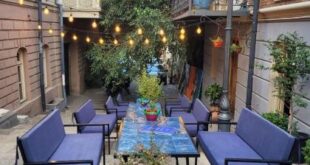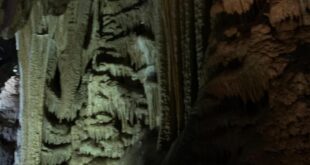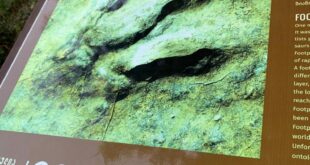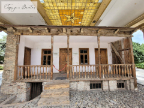Georgia City Tour
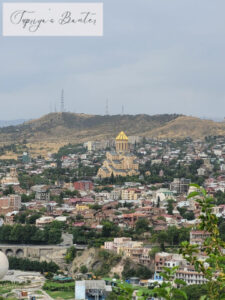
A bohemian medley of history, culture, and architecture
If you live anywhere in the Middle East and haven’t visited Georgia, then my dear friends, you are missing out. Big time.
It was a short break from work, and no other destination could be organised at such short notice. Georgia was the last-minute decision. We went with zero expectations, and oh boy! Were we surprised?
The budget-friendly country armed with its impressive history, delectable, wholesome food, and excellent wines charmed its way inside our hearts.
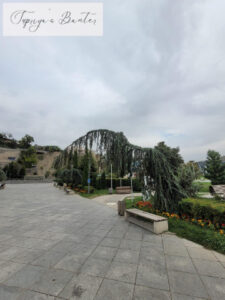
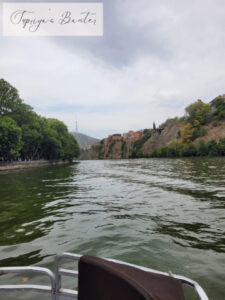
The beautiful country located at the crossroads of Europe and Asia, just between Russia and Turkey, has imbibed hues from all the surrounding countries without losing its innate Georgian essence. The mountainous country blessed with breathtaking natural bounty has everything to sate a tourist–museums, churches, natural untouched beauty, city buzz and everything in between. It’s like getting a taste of Europe without undertaking the effort and wait required to acquire the Schengen visa.
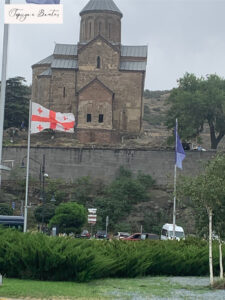
The trip started when we were picked up from the airport in midafternoon by a local guide, a vivacious medical student passionate about her country and travel. Needless to say, we chatted nonstop and even danced together on a Bollywood number.
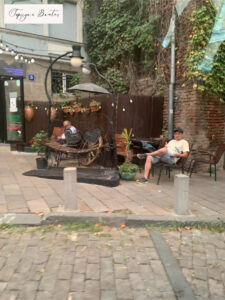
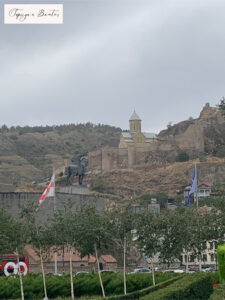
The weather was pleasant and not warm at all, considering it was the peak of summer and the Middle East (where we came from) was literally sputtering embers. We took Anna’s suggestion of embarking on the city tour before making a stopover at the hotel.
Modern architecture? Or historical charm? Nah! Both!
The tour started at the very centre of the city, at one of the largest recreational areas of Tblisi, Rike Park. Located on the banks of one of the most important rivers, the River Mtkvari, the place boasts manicured lawns, flower beds, and flowering bushes.
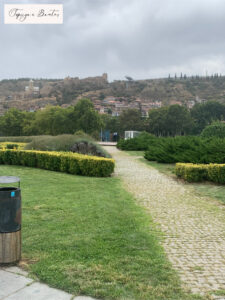
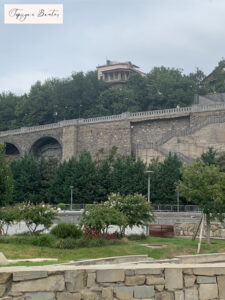
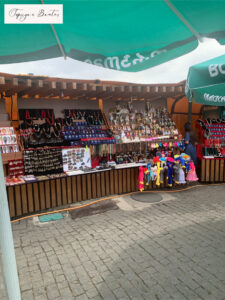
The sultry air carrying moisture from the river, eye-catching sculptures, musical fountains, and wide pathways with quiet corners make it a tourist delight.

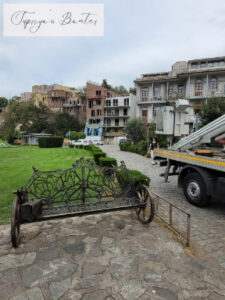
A copper tree at the entrance was absolutely enchanting. According to our guide, Anna, the tree’s twisting branches symbolised the streets of Tbilisi, finding their way to the top of the hill.
Many locals sat along the walkaway with exotic birds and animals to attract tourists—monkeys, peacocks, rabbits and whatnot.



The river, as we headed to the park’s major architectural sight– the Bridge of Peace, a gaggle of tour operators approached us for the Mtkavari river cruise until we settled on one.
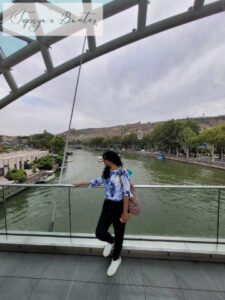
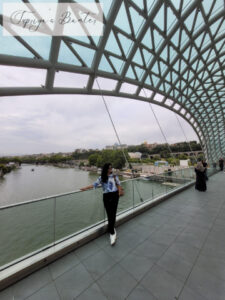
A modern structure made of glass and steel, the pedestrian Bridge stood out prominently in contrast to the city’s traditional architecture and historical buildings but also somehow fit organically into the heart of Tblisi. The intricate canopy is undulated like the body of a marine creature captured in a fisherman’s net.
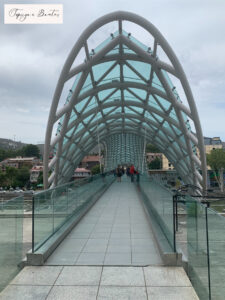


“It is magical at night, with several thousand LED lights illuminating it in the evenings, dancing fountains, performers, musicians and local food,” Anna told us as we crossed the bridge and reached the other bank of the Mtkvari River for the boat cruise.
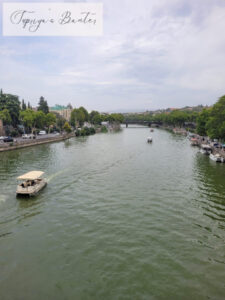


All along the promenade, tourists gazed at the serene waters of Mtkvari, basking in the late afternoon sun, savouring the moist wind, and clicking photos like there was no tomorrow. The birds were not too far behind. Needless to say, we joined the engaging activity.
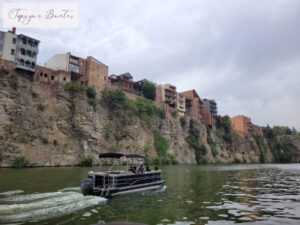
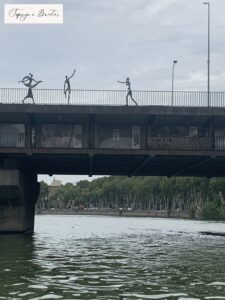
Musical Theatre and Exhibition Hall is another stately structure located at the western end of the park. Shaped into two metal tubes, the fascinating building serves as both the Musical Theatre and the Exhibition Hall. A similar fascinating imagination can be seen in the architecture of the public service hall with mushroom-shaped roofs.

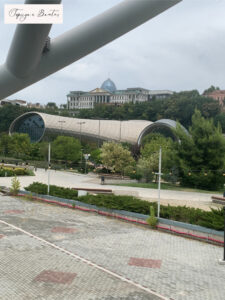
The blissful cruise
The Mtkvari river cruise was a revelation. One of the most important rivers of Georgia originates in Turkey and flows through the valley between the Caucasus mountains to reach Azerbaijan, thus forming an artery connecting the three countries. Strategically placed on the riverbank, Tbilisi is an amalgamation of two worlds—a modern world with universities, industries and education centres and the old town with narrow, winding streets and ruins of the old fortress, bounded by different layers of the walls from the original ancient ones to the newly renovated.
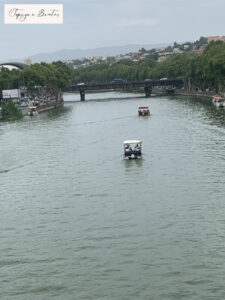
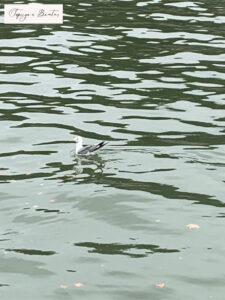

There is no better way to see this fusion than on a cruise on Mtkvari or the cable car to Narikala Fort.
Some of the important landmarks were —
Metekhi Church is an Orthodox Christian church perched on a cliff named after it. The existing facade dates back to the Middle Ages, although oral tradition traces the origins further to the 5th century.
The Sioni Cathedral is named after Mount Zion at Jerusalem.
Sameba Church, or the Holy Trinity Cathedral of Tbilisi, is one of the biggest churches and a marvel of modern architecture.
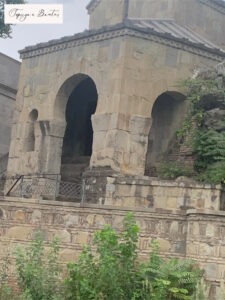
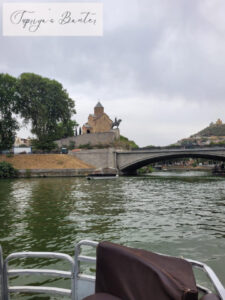
David the Builder statue, a king of Georgia from 1089 until his death in 1125, is considered to be the greatest and most successful Georgian. The stylised horse, with its powerful stance and the sword that hangs so rigidly straight, makes it a fascinating statue. He faces Mother Georgia up on the hill above him, with his hand raised as if paying respect to her.
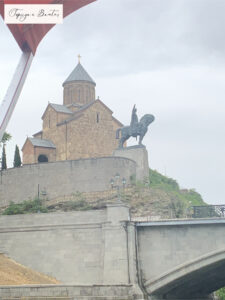
Add to that the serene sounds of Mtkvari and the melodious cooing of the songbirds perched atop the foliage flanking the river.
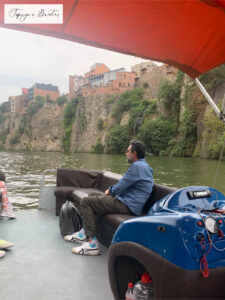


Of course, we got a taste of Georgian hospitality, too. The boat owner turned out to be a fan of Shahrukh Khan (who else!) and Preity Zinta! Soon, 90s Bollywood filled the balmy breeze and bopped on the mellow waves of Mtkvari. As expected, the ladies—Anna and my six-year-old daughter—shimmied and swayed to the music with childlike abandon.
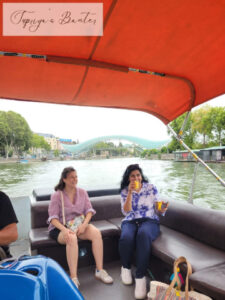

With rich Georgian wine, a sublime river, affable hosts, and exotic surroundings, the Georgian welcome couldn’t have gone any better.
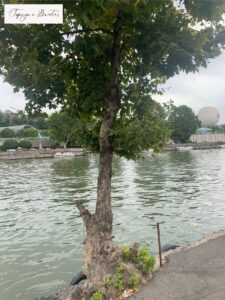
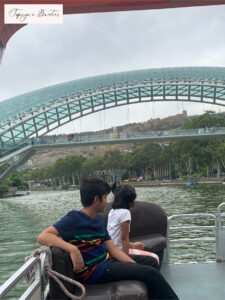
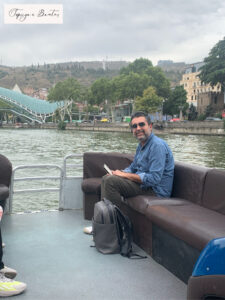
Steeped in History
The next stop was the Narikala Fortress, Tbilisi’s Iconic Castle-
Narikala Fortress, an ancient symbol of Tbilisi’s defensive brilliance, perched atop a rocky outcrop and presiding over Tbilisi and the Mtkvari River, is one of the oldest surviving structures in the capital.
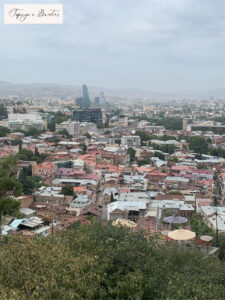
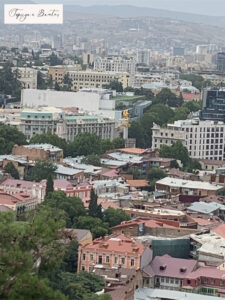
Also known as ‘the little fortress,’ Shuris Tsikhe (the Rival Fortress) dates back to the 4th century, when it was a Persian citadel.
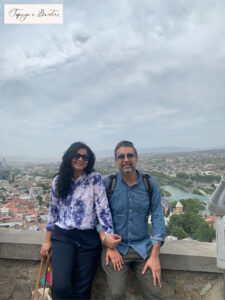
According to historians, the walls were constructed in the 8th century by the Arab emirs and later patched up by Georgians, Turks and Persians. The picturesque ancient ruin dominates the city’s skyline, offering superb panoramic views.
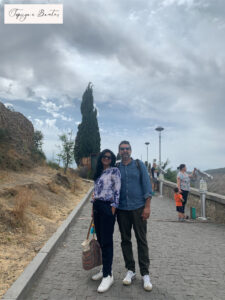

The fortress can be reached either by cable cars from Rike Park (takes less than a few minutes) or by the Narikala Tourist route. This 1500-metre trail courses from the ridge near the Mother Georgia statue, around the fortress and down into Old Town to near the entrance to the Botanical Gardens. Though the guide recommended taking the cable car up and then walking back down into the Old Town to relish the best of both worlds, we took the cable car for ease and efficiency. The fact that we were accompanied by children who were already tired from the plane journey had, in fact, already made the decision for us.
The cable car ride was picturesque, presenting a bird’ s-eye view of the whole city with its quirky and distinctive architecture. The terra cotta roofs, rundown balconies, synagogues, and churches of Tbilisi’s Old Town possess a quiet, melancholic charm.
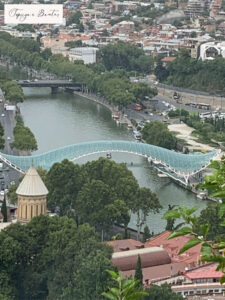

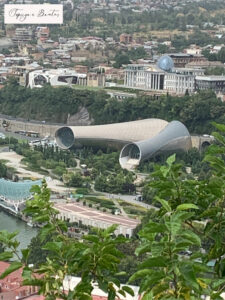
At the top, we were greeted by stunning city views, trinket shops stocked with souvenirs, Georgian wine in drums, and a handful of performers and musicians. All that is left of the original fortress is rocky ruins.

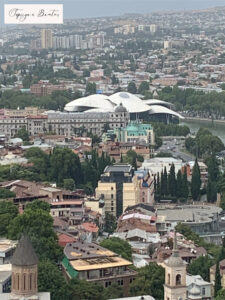
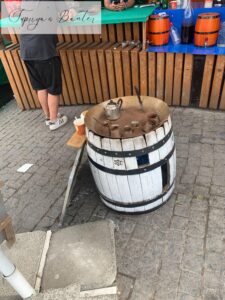
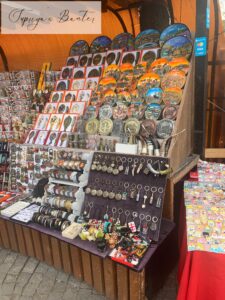
Mother Georgia and Botanical Gardens
A path along the ornamental brick-walled structure led to the statue of Kartlis Deda (Mother Georgia). This towering aluminium mother goddess symbolises the Georgian philosophy of treating guests and invaders.
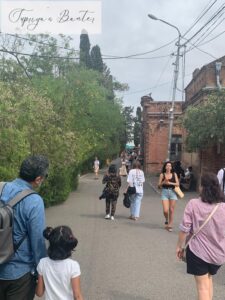

Mother Georgia brandishes a bowl of wine in one hand (to greet visitors with good intentions) and holds a sword in the other (to ward off adversaries).
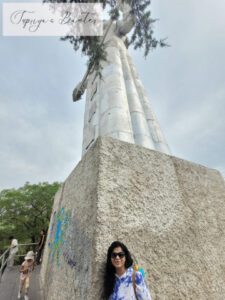
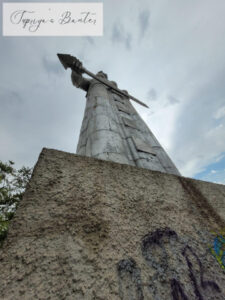
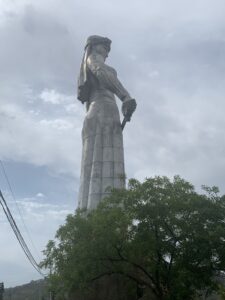
A small viewing platform attached to her feet acted as another photo stop for the tourists.
The National Botanical Garden, nestled in a valley behind the Fortress and featuring an array of medicinal, exotic, and ornamental plants, offered another scenic spot.

The bath district
The next stop was a walk around Abanotubani, literally meaning ‘bath district’ and famous for its unique Georgian take on spas- Sulphur bath houses. Known for their countless health benefits, these bathhouses are fed by the river running along the gorge, which in turn takes its origin from Leghvtakhevi, a small waterfall cascading down the craggy hills.

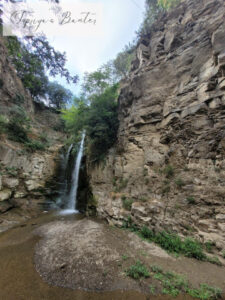
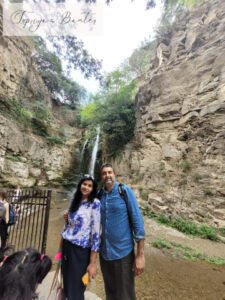
Georgia is brimming with myths and legends, and many of these stories sashay around in their bronze avatars. One such monument at the Sulphur bath depicted a Falcon sitting on top of a Pheasant.
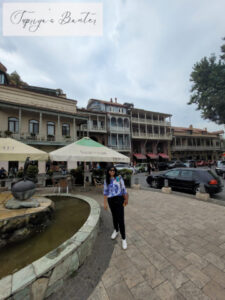
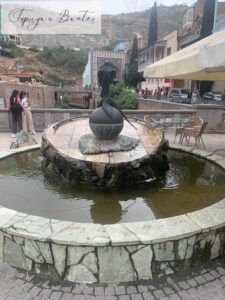
Needless to say, I wanted to know the story behind it. According to popular belief, the sculpture was created when King Vakhtang’s falcon caught a pheasant and, with it, plunged into the hot sulphur spring. The water apparently healed both the birds, and this surprising discovery led the king to build Tbilisi (meaning “the warm place”) around the healing water.


Soak into the bohemian spirit
A walk on a narrow street called Shardeni Street, named after the famous French traveller Jean Chardin, is just the way to immerse yourself in Georgia’s bohemian temperament. The narrow cobblestoned walkways buzz with free-spirited attitude and arty sensitivity. Old-style pastel and red-bricked houses, wooden balconies, countless courtyards doubling as cafes, and live music venues. Artists performing on the street, boho-style restaurants, bars with eclectic décor, and souvenir shops add to the mystical air.
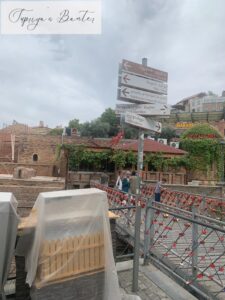


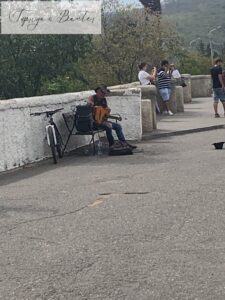
The crowded, popular street is also home to the Jumah Mosque, the only surviving mosque in the city. It is considered rare because it is one of those places where Sunni and Shia Muslims pray side by side.
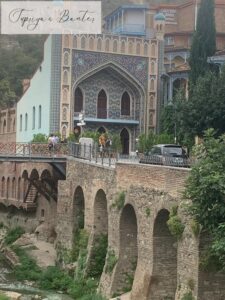
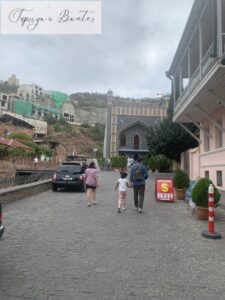
Lock your love on the love bridge
A stroll around the street, savouring the delicious Georgian wine ice cream, and posing on the ancient love-lock bridge was just the way to soak in the crackling, free-spirited energy and vibrant jazz scene. The bridge flaunted thousands of locks carrying the names of lovestruck couples and romantic quotes in several languages.



“People believe their love will last forever if they lock it over this bridge,” Anna laughed, urging us to give in to the romantic notion. We, however, preferred to lock our love by posing over this gorgeous bridge.

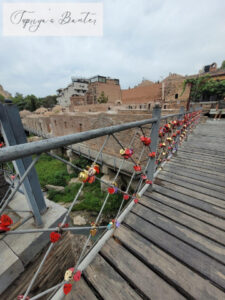
Many hidden wonders would come to the fore if one took the chance to explore the streets in depth.
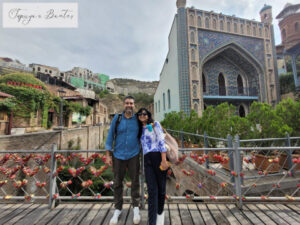
Like we came across this unassuming, modest apartment of Bidzina Kvernadze, a famous Georgian composer and musician.

Do I recommend the city tour?
Yes!
There is no better way to whet your appetite for this whimsical city tinted with an old-world charm.
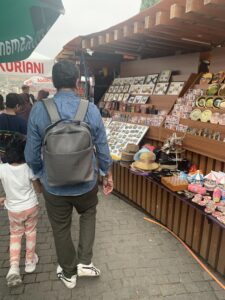
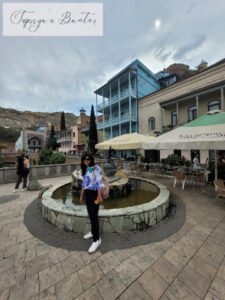
Some pointers-
- The tour involves a fair bit of walking, especially if you decide to hike up to the fortress. Comfortable walking shoes are a must.
- Once in the city, it is best to travel by foot, though public transportation and cheap taxis are readily available.
- Though the weather is pleasant, it is recommended to carry drinking water, sunscreen, hats and scarves.
- There is no dearth of toilets around the area; in fact, most of them are maintained by local ladies. But all of them are paid. It’s advisable to carry loose Georgian change, especially if you are travelling with kids.
- Women are expected to cover their heads inside churches. Though shared scarves are available at the entrances, it’s best to carry your own.
- A MetroMoney card or Transport Card can be used to pay for the cable car (the same rechargeable cards can be used on public buses and the metro).
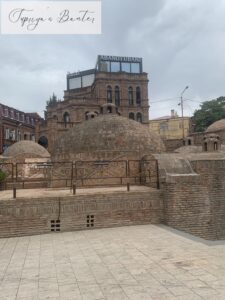
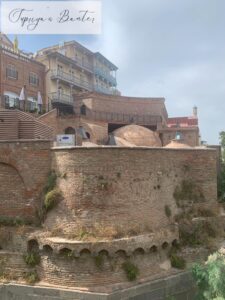
Continue Reading:
Georgia: A Wine Lover’s Dream Wrapped in Legends and History
Mtskheta, Georgia: The Sacred Side of Georgia
Jvari Monastery: A Glimpse into Georgia’s Past
Uplistsikhe: The Enigmatic Cave City of Georgia
Stalin Museum: A Journey into Georgia’s Complex Past
The Majestic Okatse Canyon: Georgia’s Natural Marvel
Crossing the Crystal Chasm: Georgia’s Diamond Glass Bridge
 Supriya's Banter
Supriya's Banter

